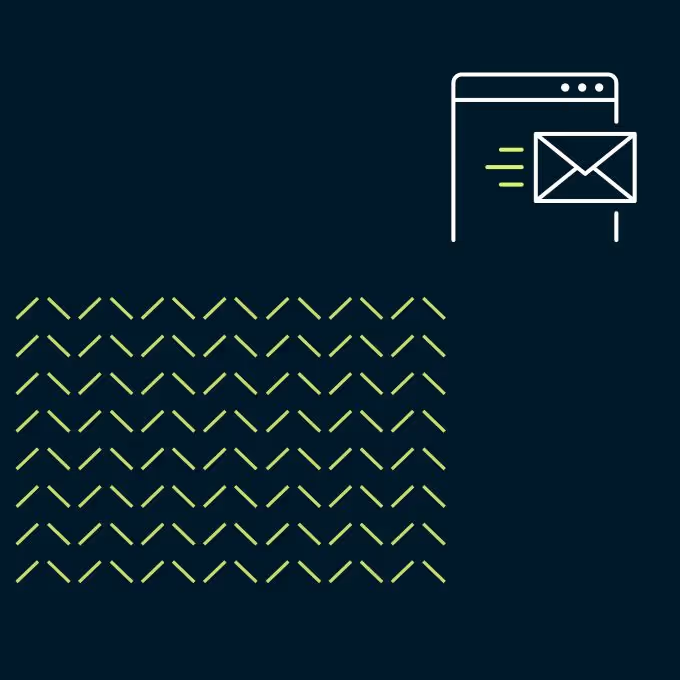Guest Post by Delia Dumitrescu
Lead Innovation Architect @ TrendWatching
Author of Trend Driven Innovation
The moment you say ‘trends’ you step into a minefield of potential confusion. Are you talking about aging populations, the rise of China or the next breakout digital device? Or are you about to forecast next season’s hottest color? Somewhat unsurprisingly, consumer trends are about consumers: how they behave, what they want, and how they view the world around them.
More importantly for business professionals, trends unlock opportunities. Understanding change – in people’s behaviors, attitudes and expectations – better places you to deliver what they want, not only now but in the future, too. So, let’s get going and look at how we define a consumer trend and it’s fundamental elements on your way to innovation.
What Are Consumer Trends?
A new behavior. A new attitude or opinion. A new expectation. Any of these can form the basis of a consumer trend. Underneath our definition lies a model that juxtaposes multiple dimensions of external change against human nature, which, at its most fundamental, doesn’t change. Basic needs such us status, creativity, self-improvement don’t change. The way we address these needs through new products and services changes and forms the basis of a new trend. Can you give an example of a fundamental trend that doesn’t change? – The trend changes. Basic needs stay the same.
But it’s not enough to simply understand a trend. You want to know where and how trends will emerge and crucially, which opportunities they will present to you.
The secret to spotting trends – and being ready to act on the opportunities they present you – lies in identifying points of tension between what people want and what is currently available.
The Fundamental Trend Elements
There are three fundamental elements that drive all trends:

- Basic Needs
- Drivers of Change
- Innovations
The secret ingredient of trends however isn’t actually any of one of these elements. Rather, it’s the tension created as the three elements interact with one another. This tension can best be identified by understanding customer expectations and by looking for gaps between what customers want – both now and in the future – and what they are currently being offered. Understanding this enables you to hit the sweet spot of trend-driven innovation with your new offering – when you beat customers’ expectations and resolve this tension. Think about how airbnb changed our expectation from travel towards a more authentic experience, how Uber changed the way we expect to move through the city or Tesla! Who would have thought an electric car can also be sexy to drive?
Basic Needs
We’re all human. Trends – and behavior more broadly – are ultimately rooted in our basic, fundamental, rarely-if-ever-changing human needs, wants and desires. Some examples: creativity, self-improvement, safety, status.Identifying these basic needs and desires isn’t rocket science or even deep social science! They are the forces that have been shaping personal and social relations for centuries if not millennia. Think about the emotions and passions that drive characters in the great works of literature. Or just listen to popular music, or watch any trashy movie. The same themes crop up again and again, precisely because they are so universally relevant and timeless. Identifying underlying human needs is central to spotting and/or understanding consumer trends.
Drivers Of Change
On the other hand, there are no trends without change. Savvy and switched-on business professionals constantly ask ‘what’s changing?’ and look at how it might be possible to service people’s basic human needs and wants in novel, exciting – better – ways. To analyze change, think in terms of Shifts and Triggers. Shifts are the long-term, macro changes (such as urban transition, aging populations and climate change) that play out across years or even decades. While not consumer trends themselves, these shifts do and will continue to shape both the nature and direction of consumer trends. Triggers are more immediate changes that drive the emergence of a trend. These can include specific technologies, political events, economic shocks, environmental incidents, and more. For example, the Snowden/ NSA revelations caused many to re-evaluate the trade-offs they were making when sharing their personal data with ‘free’ online services.
Innovations
Innovations aren’t trends. But without examples of customer-facing innovations tapping into it, a trend can’t be said to exist fully (it’s either a futurist’s flight of fancy or an as-yet-unvalidated opportunity). You can’t identify a trend for more irreverent, ‘human brands’, without businesses like Ben & Jerry’s or Old Spice delighting customers. You can’t describe the rise of the ‘on-demand economy’ without the existence and rapid growth of services like Uber or Instacart. You can’t have a zoo without animals! So, the third element of every trend is innovations: the startups, new products, services, experiences and campaigns that are resolving points of customer tension, and creating new levels of customer expectation.
Emerging Expectations
The three fundamental elements – basic needs, external change and innovations – will help you understand consumer trends. But sensing where and how these come together to form new levels of customer expectation will help you act on trends. That’s because identifying what the people embracing the brands, products and services that embody the trend now want and even expect is the best way to spot the potential opportunities within a trend. Companies need to understand and apply a counter intuitive truth: to anticipate what your customers will want next, you need to stop looking at consumers and start looking at businesses. That means learning how to draw powerful insights from the way leading brands and disruptive startups–from Apple to Uber, Chipotle to Patagonia–redefine customer expectations.
Good Examples
A good example is Uber who triggered a new expectation of „one touch services“. Using uber is as easy as pulling out your phone, touching a button and your taxi is there. We’ve seen this expectation (of one touch service) transfer to other services from complete different industries: you can push for ordering a cleaning service in Indonesia with GoJek, push for customer service with Darty in France, push for pizza or even for a lawyer in New York. The most exciting part about expectations, and really where the opportunities for innovation lie is in the fact that our customer’s expectations are transferable between industries, regions and even demographics.
Another example of emerging expectations is evident around online piracy of media content. In 1999, Napster took advantage of faster and more widespread Internet access (a prolific driver of change) to set expectations around infinite choice and free access to media. It took until 2008 for Spotify to offer customers a legitimate outlet for that expectation, finally supported by a music industry willing to tolerate free streaming. Netflix axed its limit on the volume of content its subscribers could stream the same year. It had taken nearly a decade to resolve the tension and resulting expectations that digital distribution and (illegal) file-sharing had created. Clearly there are many factors at work (others tried to launch streaming services during that decade). But identifying an unmet customer expectation will make it clear which points of tension you should focus on resolving.
Starting Consumer Trends
What if you can’t see any innovations that are catering to the new customer expectation you’ve identified? You might just be close to the holy grail of consumer trends: when it is your innovation that starts a trend by setting a new level for customer expectations that other innovators have to work to meet!
How We Identified The “Internet Of Caring Things” Trend
Released in October 2013, the Nest Protect is a two-in-one smoke alarm and carbon monoxide detector designed to be more intelligent than traditional devices. A spoken warning (rather than a noisy alarm) allows users to check whether the cause of smoke is serious. If it isn’t, they can simply wave at the device to ensure the alarm doesn’t activate, while the device also sends warnings about potential hazards or low battery power to an accompanying app.
Also in 2013, football helmet manufacturer Riddell launched its Insite Impact Response System. The ‘smart’ helmets contain sensors which send an alert to coaches when they detect a significant impact, and medical professionals can then assess the player for signs of concussion. Automaker Ford released a concept smart car seat in late 2013, too. ECG heart rate sensors can detect mid-journey heart attacks and engage assistance systems, while diabetic drivers can connect to an onboard glucose level monitoring system that alerts them to critical blood sugar level changes.
Then in 2014, Chinese technology giant Baidu released a set of prototype ‘smart chopsticks’, containing sensors able to measure the freshness of cooking oil, a common concern for Chinese consumers. The concept was originally created as an April Fools spoof, but generated such interest that the company’s engineers pursued it. Take the much-hyped ‘Internet of Things’, that is the phenomenon of connecting objects – rather than just computers and cellphones – to the Internet. Amid all the breathlessness (a smart refrigerator!), we witnessed a subset of devices that had a clear and compelling mission: to actively protect their users’ physical and mental wellbeing.
Drivers Of Change
Here’s how we used the fundamental elements to arrive at the Internet Of Caring Things trend: The application of new technologies to age-old and fundamental human needs (in this case safety). Clear drivers of change: from improved efficiency and falling cost of adding wireless connectivity to physical objects to smaller, more personal and precise sensors. A compelling case for new expectations. Indeed, after Nest’s ‘upgrading’ of a previous very bland and functional device and Riddell’s smart football helmet, the question customers will ask when faced with objects without an in-built protective function will shortly be ‘why not?’
The varied nature of the ‘bets on the future’ further support the trend: the innovations address multiple insecurities (domestic, food contamination, physical injury, reducing motor accidents), the innovations span multiple sectors and markets, and there are multiple indicators of ‘success’ (Google bought Nest for $3.2 billion, a spoof going viral, the significant and long-term investments made by Ford).
One Final Insight To Takeaway
As with so many technology-focused trends, the most powerful element in the trend is not the technology itself, and more about how that technology enables innovators to service people’s basic needs in new, and ‘better’ ways. Now it’s your turn! You now understand the three fundamental elements of a trend: basic human needs; change (both longer-term shifts and short term triggers); innovations and can identify points of tension and emerging customer expectations, which are where the key opportunities lie when it comes to consumer trends.
Happy spotting!








.jpg)



